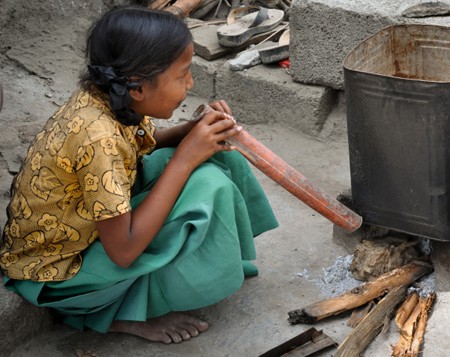
Southeast Asian countries have seen stellar progressions in their economies in the past three decades. While these improvements are laudable, there lies a pressing need to sustain their economic growths. However, Southeast Asia's economic advancement may be threatened by the lack of continued access to energy. Given that the region is highly dependent on non-renewable fossil fuels which are depleting, the region needs to look at other alternative resources to sustain its economic growth as well as to protect its energy security.
This article zooms in on a particular Southeast Asian country, Singapore, and provides insights on how the nation has taken steps to protect its energy security.
For resource-poor Singapore, the city-state understands that not all clean energy options are viable in the nation. Hence, Singapore is looking into boosting the nation's piped gas supply with liquefied natural gas (LNG), opening up the option of electricity importation and increasing energy efficiency as part of the nation's efforts to manage its energy demand. This selection will be explained in greater detail below.
First, Singapore aims to boost its piped natural gas supply with LNG. Singapore's LNG terminal which is set to be launched in the second quarter of 2013 is an essential part of Singapore's fuel diversification strategy. The LNG terminal will enable the city-state to access LNG from around the world to supplement its current gas supplies.
In addition, LNG imports could present new business opportunities to Singapore in LNG trading and bunkering. Looking at the bigger picture, Singapore has chosen to develop LNG infrastructure as it remains committed to the realisation of the Trans-ASEAN Gas Pipeline (TAGP), a key part of ASEAN's effort to enhance regional connectivity and security.
As a number of ASEAN countries are developing their own LNG infrastructures, the ASEAN Council on Petroleum (ASCOPE) has agreed to expand the scope of the TAGP to include cooperation on LNG as a viable second option to piped natural gas. In turn, this framework facilitates commercial negotiations for bilateral and sub-regional LNG trading and supply agreements.
Second, Singapore is developing a framework to govern the orderly entry of electricity import to reduce the nation's dependence on fossil fuels. Currently, 80 percent of Singapore's electricity is generated through natural gas.
Thus, electricity import could allow the nation to tap new energy options such as hydrothermal and geothermal energy that may be unavailable or unfeasible in Singapore. In addition, electricity import may enable Singapore's electricity market to be more competitive. However, at this juncture, a regional electricity market is not conceivable as it would require an alignment of interests among various stakeholders.
Finally, Singapore sees an importance in encouraging energy efficiency (EE) across all sectors of the economy. EE contributes to energy and business savings. However, the implementation of EE in the private and public sectors faces setbacks due to lack of awareness or limited capital. The nation aims to reduce these barriers through its programmes that are coordinated by the Energy Efficiency Programme Office.
Besides looking for alternative resources, the Republic has engaged in developing extensive energy research and development (R&D) aimed at building capabilities in energy know-how and developing Singapore's energy sector. For instance, Singapore's investment of S$300 million in National Innovation on Energy Resilience for Sustainable Growth is a multi-agency effort to bring out practical and innovative solutions to help address Singapore's energy challenges.
Furthermore, Singapore has developed knowledge capabilities in the nuclear arena. Despite Japan's Fukushima nuclear crisis, numerous Asian countries are still looking at nuclear energy as a viable alternative resource. Nuclear energy is highly likely to enjoy greater significance in the region's fuel mix beyond 2020.
However, unlike the rest of the region, nuclear energy may not be part of Singapore's energy mix for a long time due to Singapore's high urban density and its small size. Nonetheless, Singapore would still need to understand its implications for the region. Thus, it is essential for local scientists and engineers to know how current and emerging technology work, and be able to assess safety risks associated with nuclear energy.
In conclusion, Singapore, like the rest of Southeast Asia, is set to grow economically. In tandem, its demand for energy will grow. Energy consultancy, Wood Mackenzie has projected that Southeast Asia's demand for power will increase by 80 percent between 2011 and 2020. In order to sustain the region's economic growth, the region needs to find alternative energy resources to protect its energy security.
While Singapore may look at resources besides non-renewable fossil fuels, the nation believes that it is imperative for ASEAN nations to cooperate with one another in ensuring the efficient utilisation of energy resources in the region so as to protect and enhance Singapore's as well as the rest of Southeast Asia's energy security.
The is an extract featuring Singapore's Minister in the Prime Minister's Office and Second Minister for Home Affairs and Trade & Industry, S. Iswaran's perspectives on the opportunities and challenges ahead for SEA's energy future.
BY: An extract from EMA's Asia Energy Book 2012